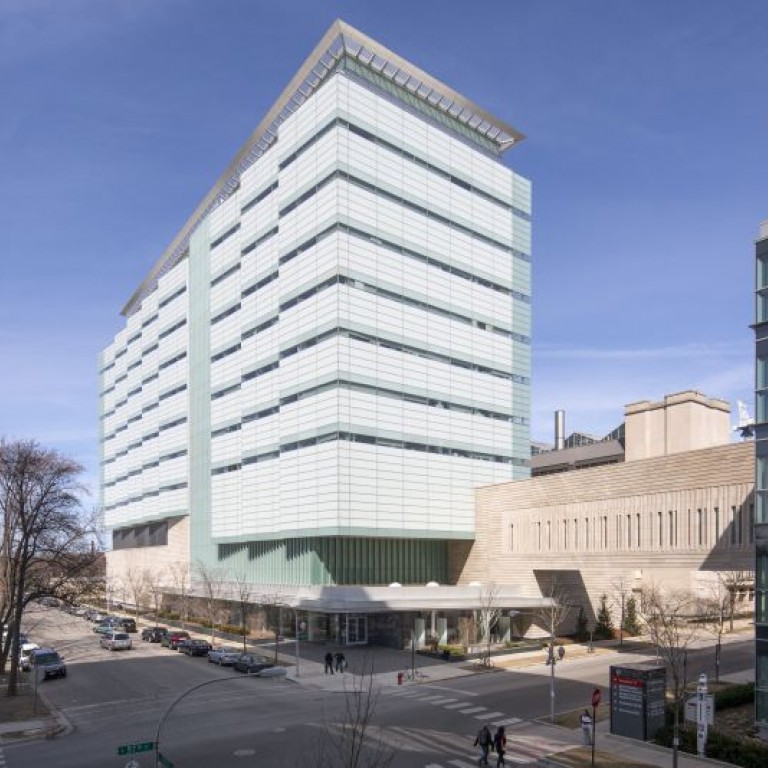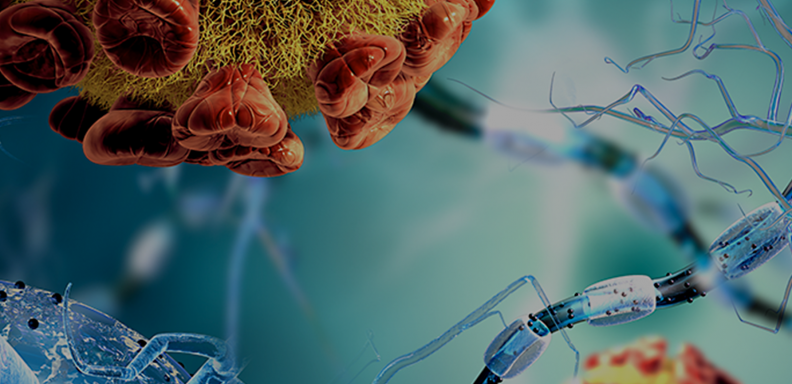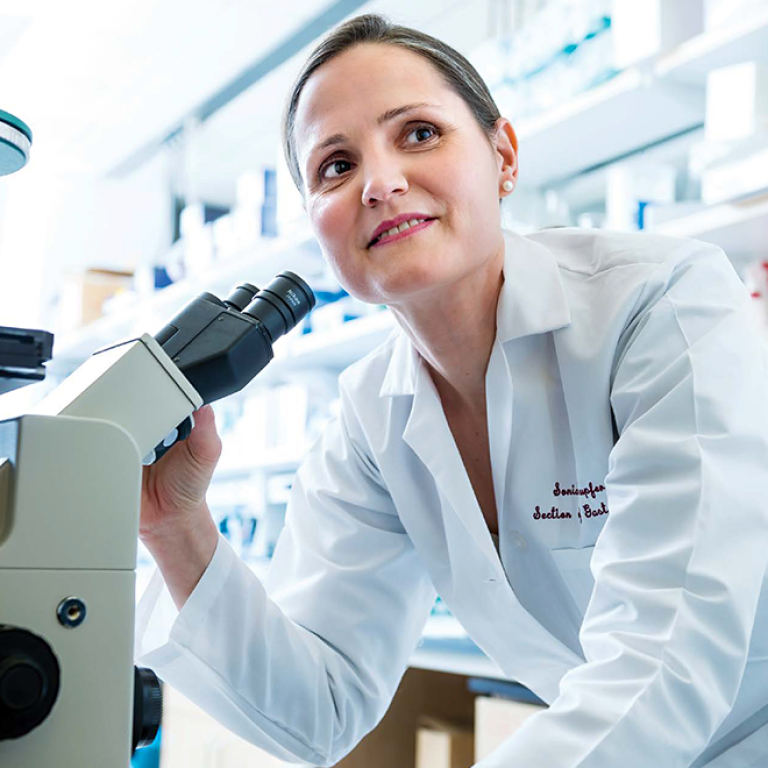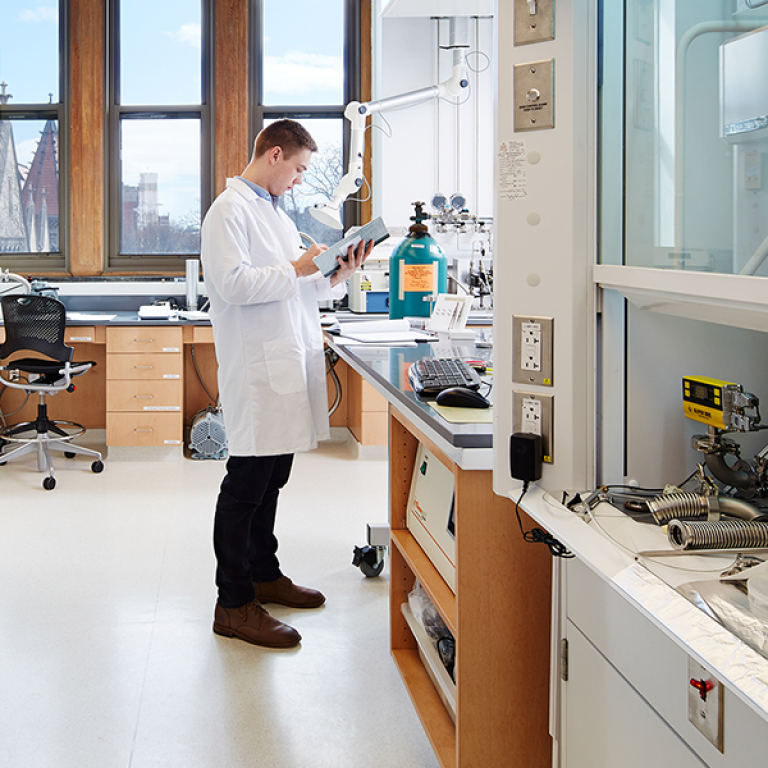By
Manasa Prahlad
Graduate Student, Genetics, Genomics and Systems Biology
Where does physics meet biology?
For Jasmine Nirody, PhD, the intersection lies in locomotion, or how things move. It’s both a direct application of fundamental mechanics from her very first college physics class and a tangible reflection of evolutionary processes.
“Locomotion is something that we think about all the time: we are moving all the time, interacting with our surroundings in physical, mechanical ways,” she said. “So, we intuitively understand it to be important in almost every species.”
But movement is just a specific instance of the broader phenomenon Nirody, who is an Assistant Professor of Organismal Biology and Anatomy at the University of Chicago, seeks to understand.
“I'm really interested in this broad evolutionary question of how interacting with complex environments affects behavior, and how that affects morphology — both on the short timescale and then over long evolutionary timescales,” she said.
“Complex” environments have changing or varied conditions. Animals living in such environments must therefore develop unique adaptations to thrive in such dynamic surroundings. To use a human example, we adapt to changing seasons every few months. We both change our behavior — by changing our wardrobes — and rely on our internal biological mechanisms to maintain a steady body temperature.
But to understand how these adaptations evolve, Nirody sets her sights well beyond just human behavior. For example, in her postdoctoral fellowships at Oxford and Rockefeller University, Nirody studied tardigrades. These microscopic animals (which you may know by their cuddlier name “water bears”) are known for occupying diverse habitats, using their jointed legs both for swimming and for an array of walking patterns. E. coli bacteria, which Nirody studied during her PhD at UC Berkeley, also display discrete movement patterns, using their flagella to both drive themselves forward and to rotate.
Selecting organisms so biologically distinct, separated by hundreds of millions of years of evolution, is key to addressing the broadness of Nirody’s question.
“Math and physics give you an obsession with universality,” Nirody said. “Because of that, I’m not married to any one species. I’m more zoomed out — excited by questions, by principles.”
Two approaches to science
Nirody describes her ideal lab as being split 50/50 between experimentalists and theorists, because she appreciates the interplay between both approaches to science.
Until her postdoctoral fellowships, Nirody herself was largely a theorist — someone who uses mathematical modeling and statistics to predict biological outcomes rather than observe them through experiments. For this reason, she initially found it challenging to wrangle the unpredictable nature of experimental research.
“The thing I really had to come to terms with as a biologist, and as an experimental biologist in particular, is that I can't own all the mistakes that happen,” she said. “I can't always know what went wrong, even if it's something that I did — that’s not something that happens in theory.”
But Nirody finds that straddling theoretical and experimental research has sharpened her skills in both areas. Becoming familiar with the limits of working at the bench allowed her to build models better suited for experimental testing. In turn, her precise models allow her to plan specific, hypothesis-driven experiments, to which she credits her efficiency at the bench.
These conceptual intersections — between physics and biology, theory, and experimentation — form the heart of Nirody’s work. But other intersections appear in her work too, like that between past and future. While exploring the history of how an organism adapted to a dynamic environment, Nirody finds herself thinking about how the principles of that relationship can be applied to fields like robotics.
“We can design synthetic systems that do some things better than biology,” she said. “But for things that synthetic systems don’t handle as well as biology, the inspiration from biological systems can be valuable.”
Nirody also enjoys pondering intersections of science and metaphysics with other philosophically minded biologists. For example, how can you reliably compare behavior across species when the species in question are a snake and a bacterial biofilm?
“When I did work with snakes, it was very easy to define a behavior. But that sense of agency and autonomy is not always granted to bacteria,” she said. “So, it raises questions like what is ‘behavior’? What kind of interactions define sociality, in terms of biofilm formation?”
What’s in store for the Nirody lab
Now heading her own lab, Nirody is excited to dive into new projects and collaborations to explore new ways that animals navigate changing environments.
Haibei Zhang, a PhD student in the lab, is currently studying Vibrio fischeri, a species of bacteria related to the cholera-causing species Vibrio cholera. These bacteria spend each day swimming in the open ocean and each night in the dense tissues of bobtail squid, giving the squid their signature bioluminescence.
“You typically have species that are purely marine, that only live in liquid, and species that only live within another organism, that are purely intestinal, for example,” Nirody said. “So, Vibrio fischeri, able to be in both of these environments, provides a really nice portal into understanding how generalist versus specialist species might work.”
Erin Brandt, PhD, a postdoctoral scholar in the Nirody lab, works on a much larger scale, studying the mechanics of how jumping spiders jump. Jumping spider species can be found in various habitats, from deserts, where they jump off shifting sand granules, to Midwest forests, jumping from leaf litter on the forest floor.
Brandt is interested in comparing the legs of jumping spider species from many different environments to understand how each species is physically adapted to their specific conditions. The researchers can do this using a CT scanner, which produces very detailed images of how the legs are structured. To access the more exotic species not native to the Midwest, the lab obtains specimens from the Field Museum.
Working on such exciting projects with students and postdocs is part of what makes UChicago exciting, Nirody says.
“UChicago has always been kind of a dream place for me,” Nirody said. “And in particular, the Organismal Biology and Anatomy department has been a bastion of free intellectual thought, where people don't ask you what the use of what you're doing is because knowledge is inherently useful.”



